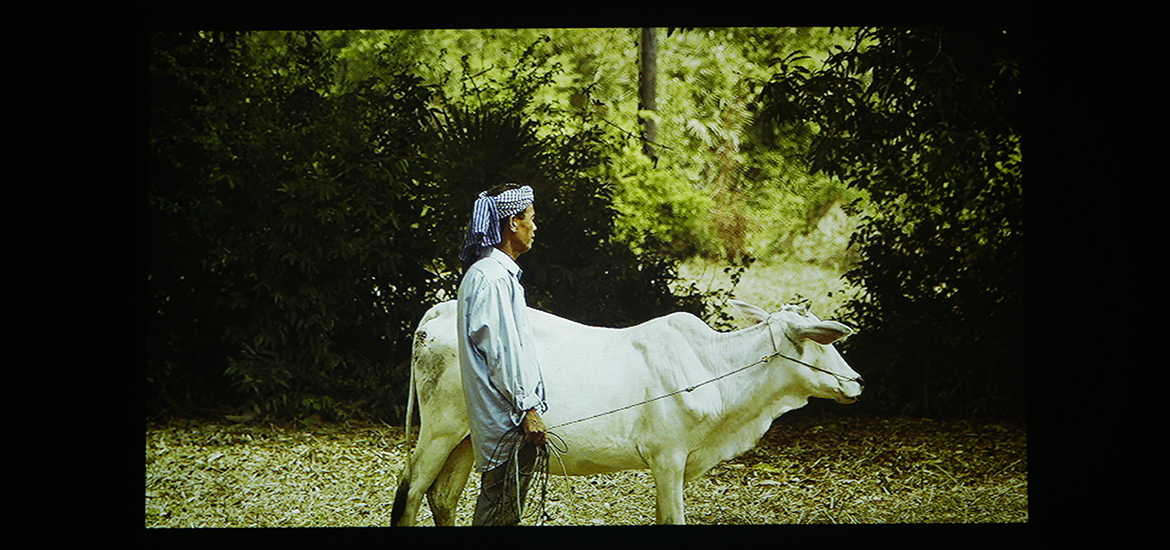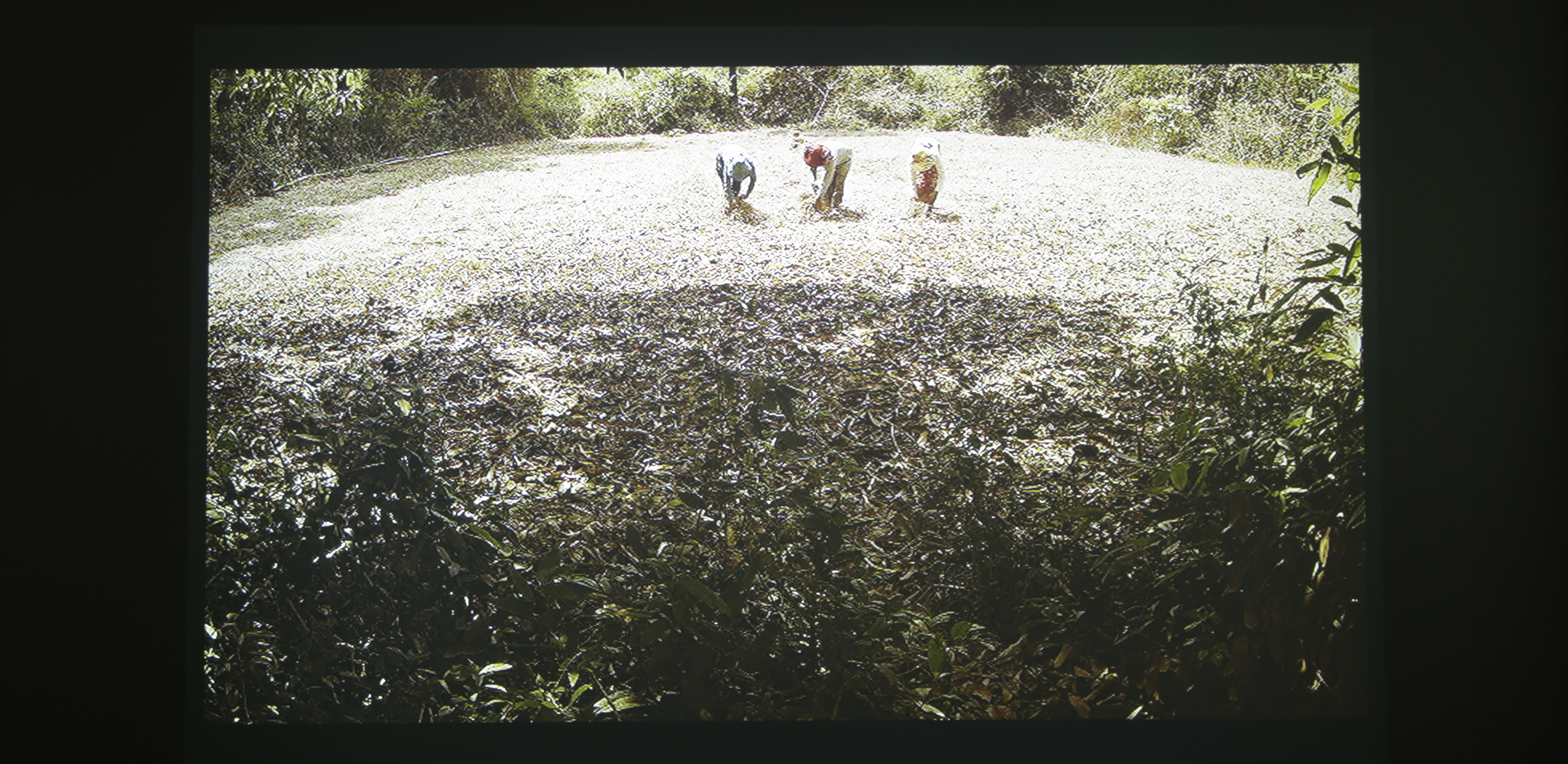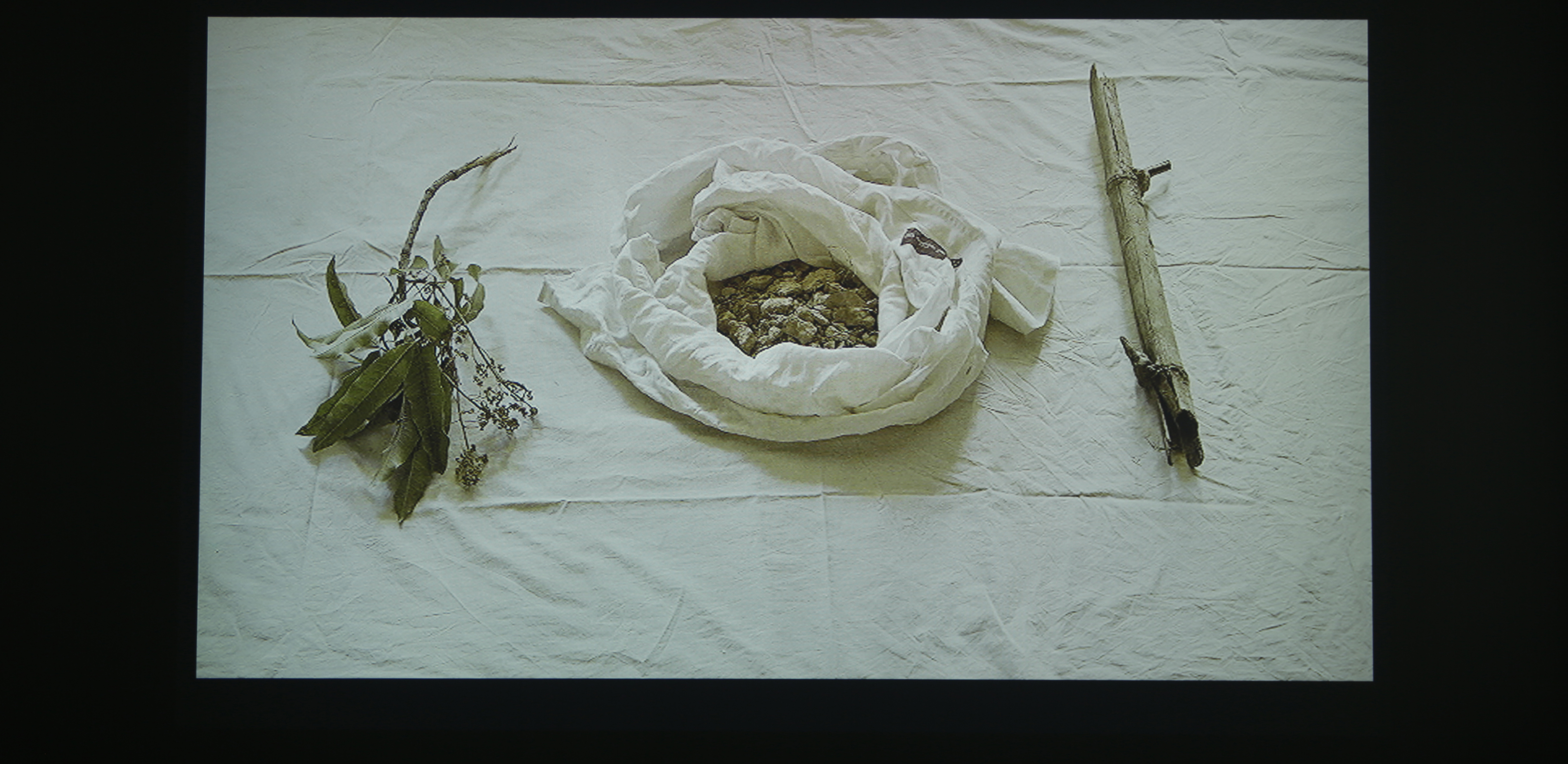Vandy Rattana: MONOLOGUE
25 September 2015 - 23 October 2015
MONOLOGUE: roomsheet and transcript
 Vandy Rattana, MONOLOGUE (film still), 2015.
Vandy Rattana, MONOLOGUE (film still), 2015.
The practice and works of Vandy Rattana serve to contradict the images of Cambodia that have been most widely captured and circulated. From the ethnographic gaze of the French Protectorate (1867–1949), to recent decades of war reportage, genocide studies, and clichés of tourism, a disproportionate representation of Angkor Wat and the Khmer Rouge perpetuates a static imaginary of Cambodia as a place and people incapable of continuity.
Born into the tenuous recovery period after the official fall of the Khmer Rouge in 1979, Vandy began photographing as a form of continuity, concerned with the lack of physical documentation of more personal stories and monuments unique to his history and culture. His early serial works straddled the line between photojournalism and conceptual practice, and were consistently focused on the everyday as experienced by Cambodian people. With subjects ranging from informal domestic scenarios with the artist's family, to labour conditions on rubber plantations, and the building of the capital's first skyscraper, Vattanac Capital Tower, Vandy's early work chronicled the contemporary moment while creating a more comprehensive archive for future generations. His more recent work is critical of historiography, and increasingly turns towards fiction.
Vandy's most widely known work, Bomb Ponds (2009), was made following a transformative encounter with the craters left over from the United States' bombing of Cambodia during the Vietnam War. Dissatisfied with the level of documentation of the bombing and its repercussions, the artist turned toward intensive scrutiny of the historiography of his country. He traveled to the ten most severely bombed provinces, engaging villagers in locating and testifying to the existence of the craters, and how they are lived with today.
MONOLOGUE offers another portrait of the land, another physical and physiological scar, another silenced aftermath that is given voice. The only sound in the film—the artist's monologue—is directed at the sister he never met, who rests somewhere beneath one of two mango trees on a small, measured plot of land, alongside his grandmother, and five thousand others who died during the Khmer Rouge regime in 1978.

Vandy Rattana, MONOLOGUE (film still), 2015.

Vandy Rattana, MONOLOGUE (film still), 2015.